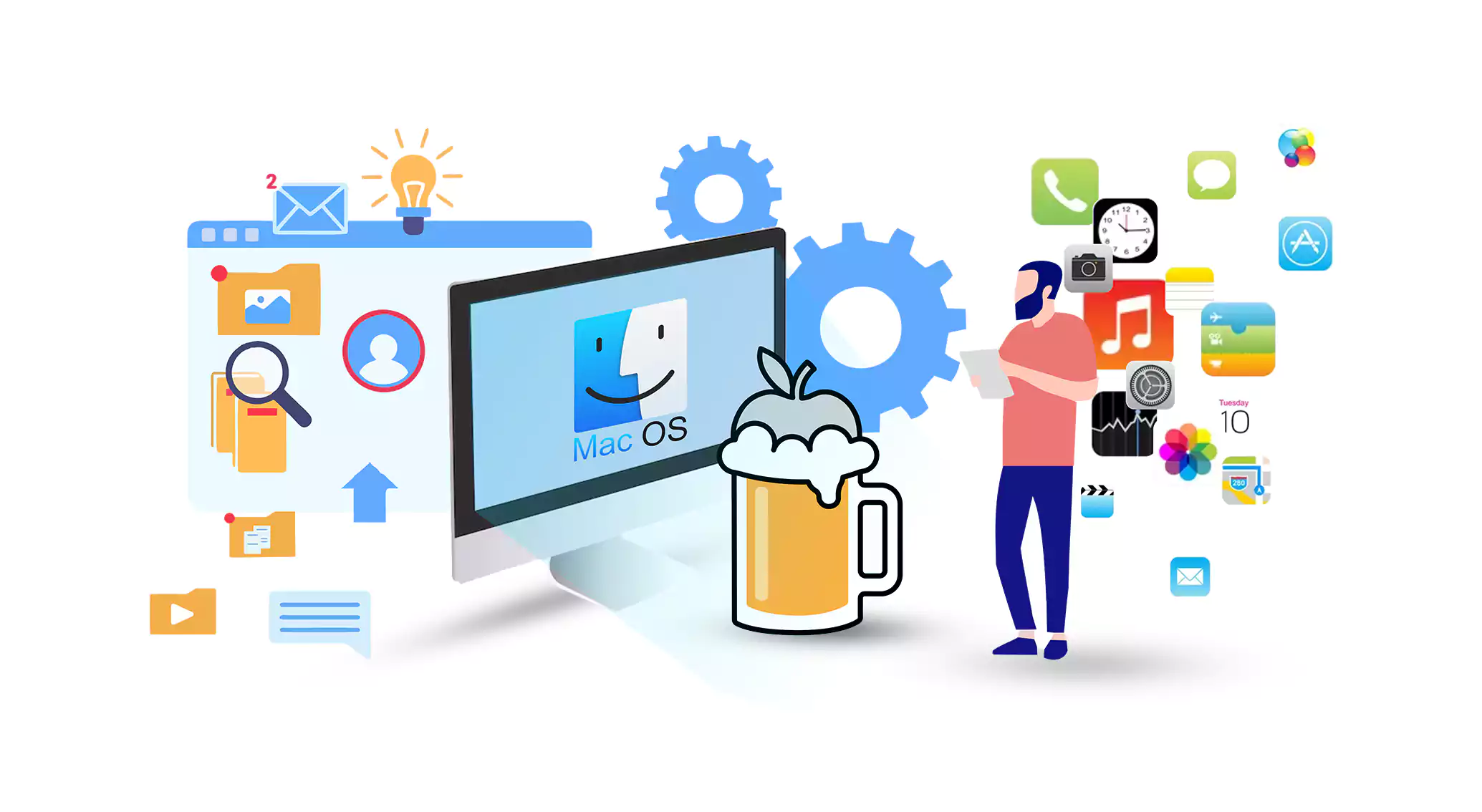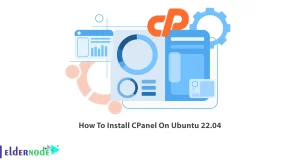
Welcome to the ultimate guide on how to install Homebrew on your Mac! In this comprehensive article, we will walk you through the step-by-step process of setting up Homebrew, the package manager for macOS that allows you to easily install and manage software from the command line.
Whether you’re a developer, a designer, or simply a tech enthusiast, Homebrew is an essential tool that can greatly enhance your Mac experience. With its vast repository of software packages, you can install everything from programming languages and development tools to productivity apps and multimedia software, all with a single command.
But fear not if you’re new to the world of command-line interfaces and package managers! We’ll start from the basics, explaining what Homebrew is, why you should use it, and how it can benefit you. Then, we’ll guide you through the installation process, providing clear instructions and useful tips along the way.
So, if you’re ready to unlock the full potential of your Mac and streamline your software installation, let’s dive into the ultimate guide to installing Homebrew on your Mac!
Table of Contents
Understanding the Mac package manager
Homebrew is a package manager for macOS that simplifies the process of installing, updating, and managing software on your Mac. It is built on top of the macOS command-line interface, also known as Terminal, which allows you to interact with your computer using text commands.
Unlike traditional methods of software installation, Homebrew uses a formula system to define how software packages should be built and installed. These formulas are written in Ruby, a programming language, and are stored in a central repository called the Homebrew core. This means that Homebrew provides a consistent and reliable way to install software, ensuring that you always get the latest versions and updates.
Using Homebrew, you can easily install popular software packages such as Python, Node.js, Git, and many others. It eliminates the need to search for software on the web, download installers, and run through the installation process manually. Instead, you can simply use Homebrew to install and manage software with a single command, saving you time and effort.
Installing Homebrew on your Mac is a straightforward process that requires a few simple steps. In the next section, we’ll guide you through the preparation and installation process, ensuring that you have Homebrew up and running in no time.
Preparing your Mac for Homebrew installation
Before installing Homebrew on your Mac, there are a few prerequisites that you need to take care of. These prerequisites ensure that your system is ready for Homebrew and that you don’t run into any issues during the installation process.
First, make sure that your Mac is running macOS High Sierra (10.13) or later. Homebrew requires a relatively recent version of macOS to function properly. You can check your macOS version by clicking on the Apple menu in the top-left corner of the screen, selecting “About This Mac,” and looking for the version number.
Next, ensure that you have the Xcode Command Line Tools installed on your Mac. These tools provide essential development utilities and libraries that Homebrew relies on. To install the Xcode Command Line Tools, open Terminal and type the following command:
xcode-select --installInstalling Homebrew on your Mac
Now that your Mac is prepared, it’s time to install Homebrew. The installation process is simple and only requires a few commands in Terminal.
/bin/bash -c "$(curl -fsSL https://raw.githubusercontent.com/Homebrew/install/HEAD/install.sh)"The script will guide you through the installation process, asking for your permission to proceed and prompting you to enter your password when necessary.
Once the installation is complete, you can verify that Homebrew is installed correctly by running the following command:
brew doctorIf everything is set up correctly, you should see a message indicating that your system is ready to brew.
Congratulations! You have successfully installed Homebrew on your MacOS. In the next section, we’ll explore the various commands and usage of Homebrew, allowing you to make the most out of this powerful package manager.
Exploring Homebrew commands and usage
Now that you have Homebrew installed on your Mac, it’s time to learn how to use it effectively. Homebrew provides a wide range of commands that allow you to install, update, and manage software packages with ease.
To install a package with Homebrew in Mac, you can use the “install” command followed by the name of the package. For example, to install Python, you can run the following command:
brew install pythonHomebrew will download the necessary files and dependencies, and then install Python on your system. You can use the same command to install other packages as well.
To update your installed packages, you can use the ‘update’ command. This command will check for updates to your installed packages and update them to the latest versions. To update all installed packages, simply run the following command:
brew updateWith Homebrew, you can also search for packages using the ‘search’ command. For example, if you’re looking for a text editor, you can run the following command:
brew search text-editorHomebrew will display a list of packages related to text editors, allowing you to choose the one that suits your needs.
In addition to installing and updating packages, Homebrew provides commands to manage and clean up your installed packages. You can use the ‘list’ command to view all installed packages, the `uninstall` command to remove a package, and the `cleanup` command to remove old versions of packages and free up disk space.
Homebrew also supports the concept of taps, which are additional repositories that provide software packages not available in the core Homebrew repository. Taps allow you to install software from third-party sources and expand the range of packages available to you. You can use the ‘tap’ command to add a tap to Homebrew and then install packages from that tap.
With these basic commands and usage, you can start exploring the vast world of software packages available through Homebrew. In the next section, we’ll discuss how to troubleshoot common Homebrew issues and ensure a smooth experience.
Finding and Installing Packages with Homebrew
Homebrew provides a vast repository of software packages that you can install with a single command. In this section, we’ll guide you through the process of finding and installing packages using Homebrew.
Step 1: Search for Packages
To search for available packages, you can use the ‘brew search‘ command followed by a keyword. For example, if you’re looking for a package related to web development, you can run the following command:
brew search web developmentThis will display a list of packages related to web development that are available for installation via Homebrew.
Step 2: Install a Package
Once you have found a package that you want to install, you can use the ‘brew install‘ command followed by the package name. For example, if you want to install Node.js, you can run the following command:
brew install nodeHomebrew will download and install the package along with any required dependencies. The installation process may take some time depending on the size of the package and your internet connection speed.
Step 3: Verify the Installation
After the package installation is complete, you can verify that it was installed correctly by running the following command:
brew listThis will display a list of all the packages installed via Homebrew on your system. If the package you installed is listed, it means the installation was successful.
Congratulations! You have successfully found and installed a package using Homebrew. Now, let’s explore how to manage and update packages with Homebrew.
Troubleshooting common Homebrew issues
While Homebrew strives to provide a seamless software installation experience, issues can sometimes arise. In this section, we’ll cover some common problems you may encounter and provide troubleshooting tips to help you resolve them.
One common issue is the inability to connect to the Homebrew servers. This can happen if you’re behind a firewall or proxy that blocks the necessary connections. To resolve this, you can set the necessary environment variables to bypass the firewall or proxy. Homebrew provides instructions on how to do this in their documentation.
Another issue you may encounter is package conflicts. This can happen when you have multiple versions of a package installed, or when a package depends on conflicting dependencies. To resolve this, you can use Homebrew’s ‘link‘ and ‘unlink‘ commands to manage the versions of installed packages. Additionally, you can use the ‘pin‘ command to prevent a package from being updated.
If you’re experiencing issues with specific packages, it’s a good idea to check the Homebrew issue tracker and forums for known issues and possible workarounds. Homebrew has a vibrant community of users and developers who can provide helpful insights and solutions.
If all else fails, you can always uninstall and reinstall Homebrew. This will reset your Homebrew installation to its initial state and can help resolve any persistent issues. To uninstall Homebrew, run the following command in Terminal:
/bin/bash -c "$(curl -fsSL https://raw.githubusercontent.com/Homebrew/install/HEAD/uninstall.sh)"After uninstalling, you can follow the installation instructions provided earlier to reinstall Homebrew.
Conclusion and final thoughts
In this ultimate guide, we have covered everything you need to know about installing and using Homebrew on your Mac. We started by explaining what Homebrew is and why it is a valuable tool for Mac users. We then guided you through the step-by-step process of installing Homebrew, ensuring that your Mac is ready for software installation.
Once Homebrew was installed, we explored the various commands and usage of Homebrew, allowing you to install, update, and manage software packages with ease. We discussed common Homebrew issues and provided troubleshooting tips to help you resolve them. Finally, we delved into the advanced customization options of Homebrew, empowering you to tailor your package manager to your specific needs.
With Homebrew, you have unlocked the power of customization on your Mac. You can now easily install and manage software packages, streamline your workflow, and take full control of your software installation. Whether you’re a developer, a designer, or simply a tech enthusiast, Homebrew is a valuable tool that can greatly enhance your Mac experience.
So, what are you waiting for? Start using Homebrew today and unlock the full potential of your Mac!




